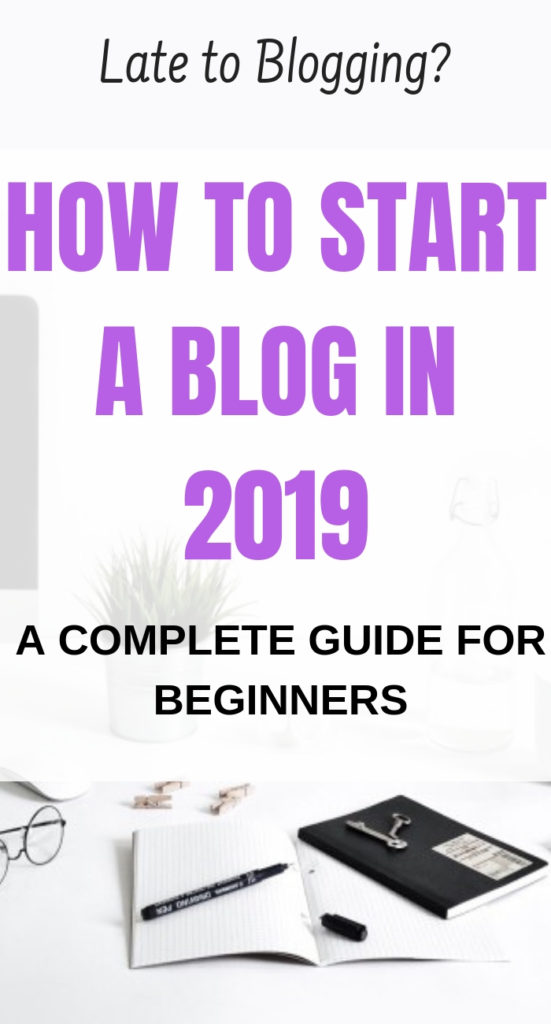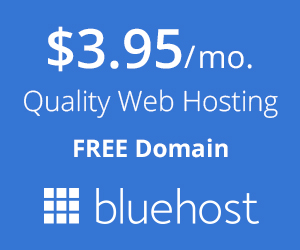
The average person can start a blog and make money within a few months. Typical bloggers make between $300-$1000 dollars per month. And around 9% of bloggers earn over $50,000 per month (that’s $600,000 a year).
You can make a lot of money from blogging, but the rumors are true:
Blogging is getting more competitive and more established blogs had a head start.
Despite the competition, serious bloggers have a very high income potential with very low overheads. This is why starting a blog is so attractive.
But has the ship for starting a blog already sailed?
NO.
Here are some things that you need to know before starting a blog:
- If you are late to blogging, you will have to work harder
- You have to be valuable, consistent, and visible to your audience
- You don’t need a large audience, but you need to know how to drive traffic and monetize it
You do have to work harder to get your voice out there, create amazing content, and drive worthwhile traffic to your blog in order to get rich from blogging.
But before we get started with that, you first have to know how to start a blog that can be profitable.
My first blog was started in March 2018. I wanted to start a blog from I was in high school and knew that blogging existed, but I was afraid of investing the money and of putting myself out there.
After years of watching other persons start a blog, reserving domain names I’d end up not using, and wasting so much, time, I decided that enough was enough.
I was either going to pursue this dream of being a successful blogger or let it go completely to focus on something else.
So I gave myself 30 days to start a successful blog and launch it with at least 5 articles.
Below, I’m going to show you the guide to starting a blog with the right foundation.
This blueprint personally helped me to get over 15,000 page views in my first month as a blogger. I was also able to sign up with one of the best ad agencies within 3 months of launching my blog.
How To Start a Blog in 2019
1. Eliminate Uncertainty With a Profitable Niche
When starting a blog, it’s best to choose a niche that is going to be profitable. These niches are filled with profitable blogs and there is always room for great bloggers to rise to the top.
The most profitable blog niches to start a blog in are:
- personal finance/money blog
- parenting blog
- health blog
- lifestyle
- frugal living
- blogging/make money online
Whichever blog niche you choose, it’s always a good idea to select one where you have enough experience and room to grow. These will give you a push to start a blog that is going to be profitable.
These blog niches also have good affiliate programs that you can sign up with to earn money from affiliate marketing.
2. Reserve Your Domaine Name
After you have selected your desired blogging niche, it’s time to get an idea of what you want to name your blog.
Ideally, your blog name should be straightforward, easy to remember, and easy to spell.
During this step, you can check sites like namecheap.com or godaddy.com to see if your chosen domain name is available.
If it is available on the domain name registrar, then it’s time to check the top social media platforms (Youtube, Facebook, Instagram, Pinterest, and Twitter) to see if the name is available.
This is important because these sites are where you can promote your blog and drive traffic.
Some names will not be available, but you can choose variations or a different name so that you’re easy to find across all channels.
Pro Tip: If you choose to host with Bluehost, you will get your domain for free for the first year.
After choosing a name, it’s time to get hosting.
Choose a Blog Hosting Platform
If you want to start a blog that you own completely, then you need a self-hosted blog.
This means that your blog is your platform and your property. Of course, you will need reliable hosting so that your blog will be visible on the internet.
This is where Bluehost comes in.
Bluehost
This is what I and the majority of bloggers use to start a blog. Bluehost provides blog hosting for less than $5 per month.
When you sign up for a hosting account on Bluehost, the next step is to install WordPress.org on your blog. The introductory guide will walk you through this.
After you have your hosting and domain name ready, it’s time to set up your blog.
Set Up Your Blog
1. Choose a Theme
When you first start a blog, you’re building from a blank canvas. A blog theme will help you to design your blog in a way that you and your readers will appreciate.
There are many free WordPress themes that you can choose from when your first start a blog. This way, you don’t have to worry about spending money on a theme.
There are many options for WordPress themes, with price ranges from $35 to customized themes for over $10,000.
Pro Tip: Wait a few weeks before buying a theme so that you can establish exactly what you want your blog to look like. This way, you won’t spend money on a theme you’re not satisfied with.
If you’re concerned about the speed of free themes, here’s a great article to help you choose a fast WordPress theme that’s also free.
2. Install the Relevant Plugins
Plugins add more functionality to your blog. There are thousands of plugins that are available on WordPress, but you don’t want to get too carried away.
Too many plugins can cause your website to slow down and a slow website does not make money. People don’t want to wait more than 3 seconds for a blog to load.
The most important plugins for your new blog will help you to track and protect your website while improving speed.
Here are the top plugins to install on your blog:
Google Analytics tracks the visitors to your blog so you can see how many page views you have. In also provides more in-depth analytics such as:
- where your visitors come from (source)
- what pages and posts are more popular
- how much time visitors spend on your website
- etc
Sucuri is a security plugin that helps to protect your blog from unwanted attacks.
W3 Cache or WP-Cache helps to improve the speed of your blog.
UpdraftPlus is a free plugin that helps you to back up your blog so that you can restore it if there were any hacks or accidents.
Social Warfare or Social Icons will help you and your visitors to share your blog posts on social media platforms easily.
Yoast SEO will help you to track your SEO on blog posts to help you rank higher for your chosen keywords.
SMUSH will help you reduce the amount of space that images take up on your website, thus improving your blog speed.
3. Add the Important Pages
These pages will help to protect your blog and provide more information to your readers.
About page will give your readers some information about your blog and you, as the founders.
The Privacy Policy is without a doubt the most important page on your blog. This lets readers know how their data is being collected, processed, stored, and shared.
A disclaimer is necessary if you have affiliates or any other industry standard disclaimers to protect you from legal action. Yes, bloggers can be sued and this is why disclaimers are necessary.
Contact is needed to give your readers a way to contact you. You will need a professional email address.
Pro Tip: Some affiliate networks and email hosting providers will not accept a Gmail email account for your blog. It’s best to have an email address like admin@dailydietdish.com. You can set up an email address like this with Bluehost.
Is this your year to be a successful blogger?
If you want to start a blog in 2019, here’s what you should do next:
- Sign up for your blog hosting with Bluehost
Read Next: How To Start a Food Blog


